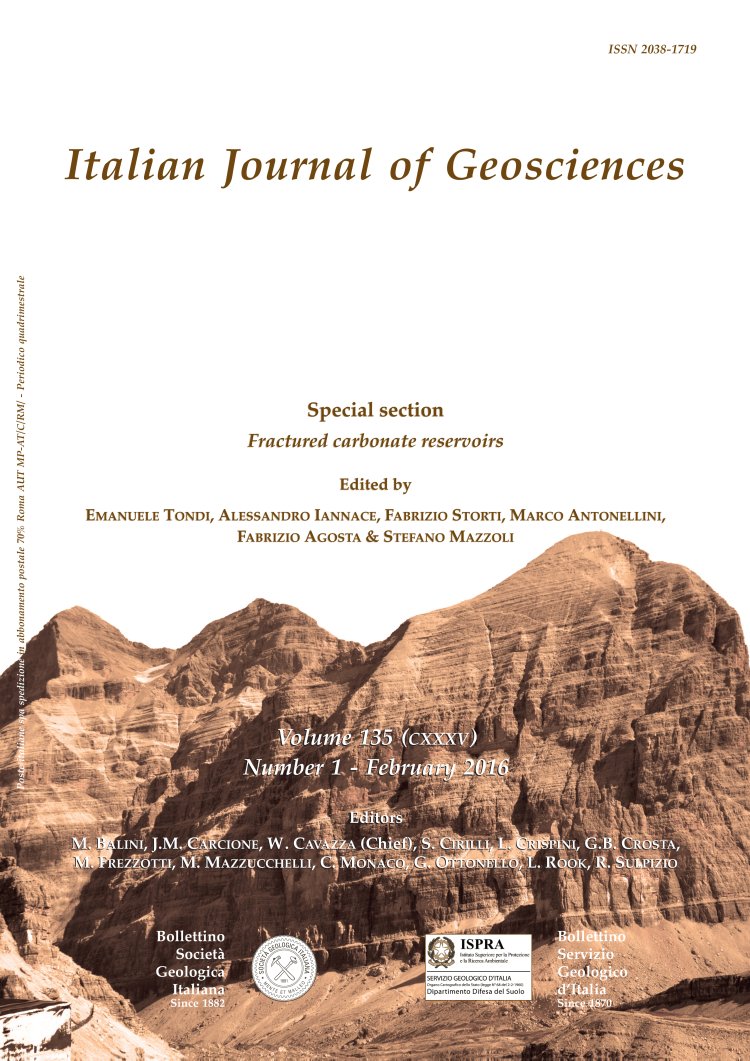
Hydraulic properties of fault zones in porous carbonates, examples from central and southern Italy
Emanuele Tondi (1), Andrea Rustichelli (1), Antonino Cilona (2), Fabrizio Balsamo (3), Fabrizio Storti (3), Giuseppe Napoli (4), Fabrizio Agosta (5), Pietro Renda (4) & Maurizio Giorgioni (6)
(1) Scuola di Scienze e Tecnologie, Università di Camerino, Italy. Corresponding author e-mail: andrea.rustichelli@unicam.it; tel: +39 0737 402619; fax: +39 0737 402644.
(2) Department of Geological and Environmental Sciences, Stanford University, USA. Now at Shell Global Solution, Rijswijk, Netherlands.
(3) Dipartimento di Fisica e Scienze della Terra "Macedonio Melloni", Università di Parma, Italy.
(4) Dipartimento di Scienze della Terra e del Mare, Università di Palermo, Italy.
(5) Dipartimento di Scienze, Università della Basilicata, Italy.
(6) Shell Italia, E&P, Rome, Italy.
Abstract
Keywords
Get Full Text